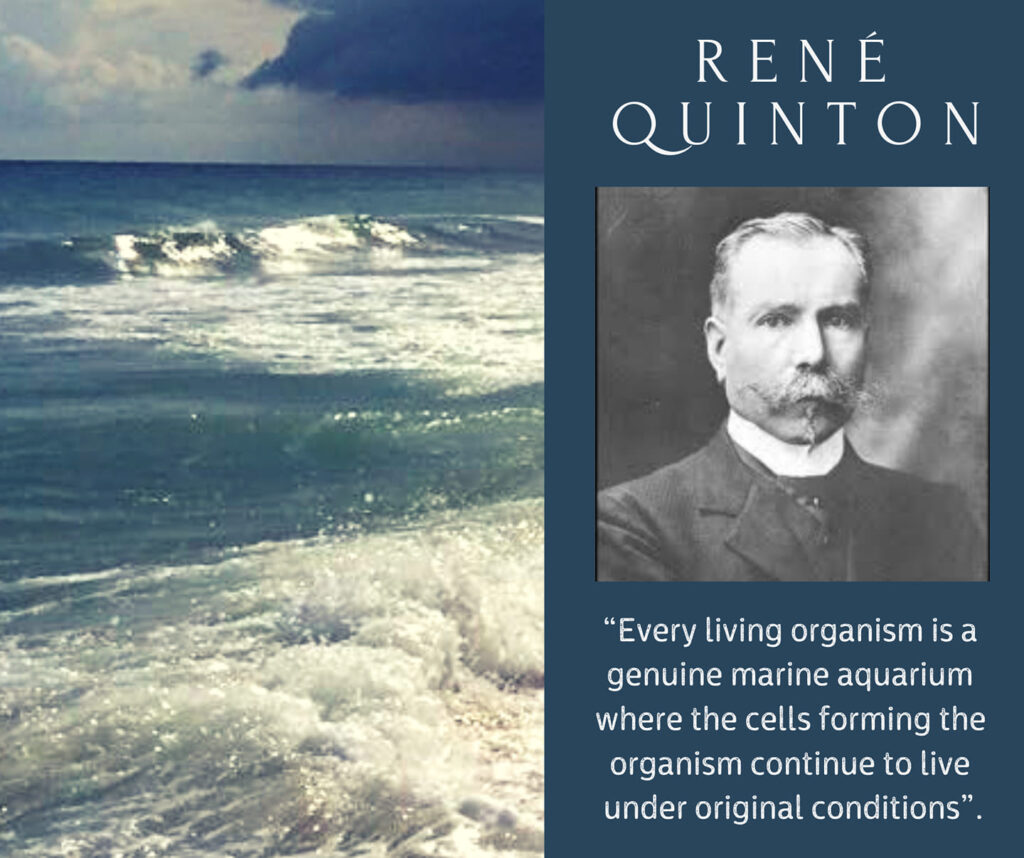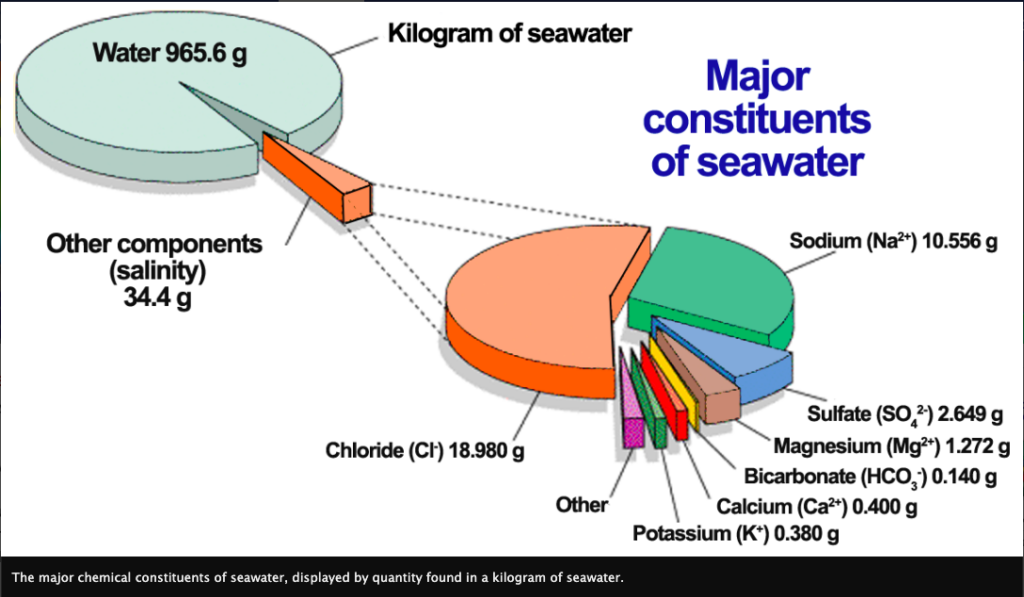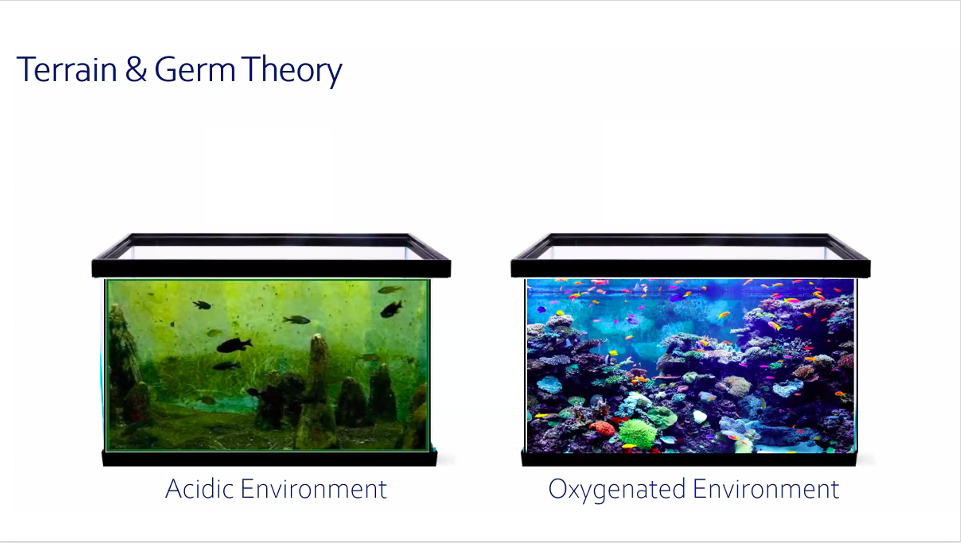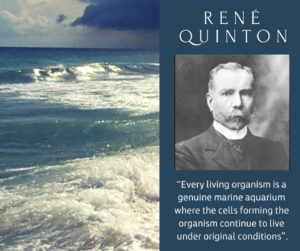Sea water as source of help for the human body

In France, in 1904, there was a very famous medical treatise called: “Sea water, organic environment”, a sort of marine dispensary for 300 injections per day, intravenous sea water that cures.
Many important figures of the last century, including the philosopher Bergson and the mathematician De Broglie, were treated with this method in French hospitals, the flagship of which was the Saint Luis Hospital in Paris.
In the Vidal Dictionary 1975, which was the reference pharmaceutical manual for French doctors, we read that to treat countless pathologies (such as dysentery, gastroenteritis, colds, sinusitis, allergies, psoriasis and uro-genital infections), among the proposed medicines there is still sea water, administered to the patient through injections.
Sea water has been banned in injections since 1986 after having been used for many years and to date it has therefore remained only drinkable.
The main studies on the use of sea water in medicine are due to the researcher physiologist and biologist René Quinton, who lived between the 19th and 20th centuries, discoverer of the close links between the human organism and the salt water of the sea.
In his books, the scientist wrote:
“We are a real living marine aquarium, our organic environment (the liquids in which our cells are immersed) is in osmosis with the marine environment: sea water is in harmony with every smallest part of our body”.
Again according to Quinton, marine plasma and blood plasma are characterized by “a physical and physiological identity”.
THE HISTORY OF RENE’ QUINTON’S STUDIES
The discovery that the revitalizing and remineralizing effects of sea water could also be used as a therapeutic additive dates back to the early 20th century, and it all started with a theory: the mineral composition of vertebrate blood reflects that of ancient oceans, where life appeared.
It was the eminent physician and biochemist Archibald Byron Macallum, founder of the first marine biology center in Canada, who first enunciated this theory in 1903 in his text On the Inorganic Composition of the Medusae, Aurelia flavidula and Cyanea Artica , while on the other side of the ocean, in France, a visionary biologist named René Quinton exposed the laws of the original constancy of the world in his famous treatise L’eau de mer, milieu organique (1904).
Among these laws, that of marine constancy: “Animal life tends to maintain the conditions of origin”.
Life comes from water: each individual is immersed in amniotic fluid for the first nine months of their existence. Following his studies, René Quinton had a suggestive intuition: “the composition of the internal liquid medium, blood and lymph, of all living organisms” – he hypothesized – “is physiologically similar to sea water”.
Quinton organized the experimental test of his claims in a public place (the Pathological Physiology laboratory of the Collège de France). The experiment was done on a ten-kilo dog, which was bled dry in four minutes. The animal went into a coma. Quinton replaced the blood with 6.6 liters of sea water diluted with distilled water (about seven tenths of the animal’s weight) and the dog recovered.
The experiment was repeated to confirm that sea water is “like blood” and, therefore, never dangerous, by injecting a dog with “more than its own weight” of diluted sea water. The animals, having recovered in a few days, were “more lively than before”, as if they had received a specific benefit, finding in sea water a vital contribution greater than that of the blood taken from them.
René Quinton was not satisfied and continued with his research, which later also led him to the chemical proof of the equivalence between blood and sea water due to the nature of the salts, the presence of trace elements and the chemical properties: he thus confirmed the initial hypothesis that “nothing resembles the internal liquid medium of man more than simple sea water”.
As early as 1906, Quinton proposed his seawater therapy to babies suffering from serious gastrointestinal disorders. The marine treatment applied in the hospital departments of Paris (Saint-Louis, Beaujon, Hôtel-Dieu, Tenon, Maison Dubois, Pitié hospitals and at the Mouleaux asylum) consisted of subcutaneous injections of seawater brought to organic isotonicity at a dose of 0.01 to 0.015 (for this mixture one hundredth to one and a half hundredths) of the subject’s body weight.
Given the success, Quinton opened his own dispensary in Paris: the marine therapy developed by Quinton has literally saved thousands of human lives. It was a success and soon France was covered with a dozen “Quinton dispensaries”. The newspapers praised Quinton as a new Louis Pasteur.
The method of using sea water then spread to other countries such as England, Italy and Belgium and throughout Europe. Quinton’s fame even reached Egypt where he went to try to stop the carnage caused by dysentery in children. He returned to France in 1913 and then the Great War broke out.
After the armistice, the Quinton method stopped spreading following advances in hygiene and medical therapy. His disciples Jarricot, Macé, Simon, Potocki and others, nevertheless continued his therapy until the Second World War.
Today the Quinton therapeutic method is still applied by a few doctors. For example, treatment of lumbar disc pathologies by subcutaneous injections of marine solutions around the affected discs (percutaneous hydrotomy with sea water) shows good results. The crushed disc(s) seem to regain a normal volume by rehydrating with sea water.
Contrary to the way in which they proceeded at the time, R. Quinton did not focus on germs, as in the case of Pasteur. He was rather interested in the BALANCE that the organism needs to remain healthy.
Quinton perceived the body as an aquarium, in which the fluids had to be in perfect balance, and he considered his marine plasma as the best way to achieve and maintain it.
Today, the balance of fluids is called “homeostasis“, and this state is essential for the proper functioning of all the cells of the organism.
And precisely because marine therapy does not focus on germs but aims to achieve a balance, it is beneficial and effective in the case of any type of imbalance attributable to a lack of minerals and trace elements, or to a change in the body’s pH.
Quinton demonstrated this by healing patients suffering from cholera, tuberculosis, typhoid, lichen or eczema, children who were dying of hunger, women who had had several miscarriages.
Then, antibiotics arrived.
Quinton’s descendants kept marine therapy alive for a while: René Quinton’s marine plasma continued to be reimbursed by the French health service and to be listed in the Vidal medical dictionary until 1975, but interest in the product gradually decreased.
BLOOD PLASMA AND SEA WATER: are they really similar?
It is true that the chemical composition of blood plasma is somewhat similar to that of sea water, but there are also significant differences. Both contain sodium (Na+), chloride (Cl-) and other dissolved substances, but in different proportions.
- Sodium (Na+) and Chloride (Cl-): Blood plasma and sea water both contain sodium and chloride in abundance. However, in sea water, the concentration of sodium and chloride is much higher than in plasma. Quinton explained this difference with the theory that the salt concentration in sea water has varied over time, increasing during geological eras, and that it was similar to the values present in blood in the past.
- Other electrolytes: Blood plasma contains dissolved substances such as potassium (K+), calcium (Ca2+), bicarbonate (HCO3-), and proteins, which are present in much higher concentrations in plasma than in seawater. Seawater can contains many different minerals, very precious for the body, like: magnesium, calcium, potassium, barium, iodine, selenium, bromine, strontium, iron, sulphur, chromium, cobalt, zinc, hydrogen, lithium, rubidium, vanadium.
- Proteins: A major difference between blood plasma and seawater is the presence of proteins in plasma. Proteins, such as albumin, are essential for blood function, transporting molecules, and maintaining osmotic pressure. Anyway, in seawater we can find amino acids, amino acids precursors of proteins.
Seawater is therefore the only known food containing exactly all the minerals a living being needs, and this in perfect proportions.
MINERALS PRESENT IN SEA WATER
The analyses show at least 78 different minerals, ranging from the most well-known ones such as magnesium or calcium, to the rarest trace elements such as gold or silver, in subtle doses. All these minerals play an essential role in our body and this is thanks to the perfectly respected dosage in seawater.
In water, salts dissociate into positive ions (cations) and negative ions (anions). Sodium chloride, NaCl, breaks down into Na+ and Cl-. Magnesium sulfate (MgSO4) becomes Mg++ and SO4–. Of the sixty salts found in seawater, six (Na+, K+, Mg++, Ca++, Cl-, SO4–) represent more than 99% of the salt composition.
The salinity or concentration of salts in seawater (expressed in grams per liter of seawater) varies depending on the season, the place of collection and the depth at which it was collected. For example, 15 g/l can be found in the Arctic Ocean, 25 g/l in the North Sea and 38 g/l in the Mediterranean.
The average amount of salt is 35 g/l.
The highest degree of salinity in the Dead Sea reaches 280 g/l of water.
Sea salts were transported mostly by runoff waters that washed away the soil of the continents over millions of years. Volatile elements (sulfur, nitrogen, boron, etc.) come from the primordial atmosphere. Other minerals come from hot underwater hydrothermal vents.
Cold sea water penetrated the oceanic crust and, as it passed through, was subjected to great pressures and very high temperatures. It then dissolved a large quantity of elements that it then poured into the submarine source.
One of the great peculiarities of sea water is that it has a constant composition: whatever the degree of salinity, the relative proportions of its main components remain unchanged (chlorine 55%, sodium 31%, sulphate 8%, magnesium 4%, etc.).
This law, known as Dittmar’s law (from the name of the Scottish chemist who demonstrated this property in 1884), thus allows the overall salinity of sea water to be determined from a single measurement: the salt concentration of one of its main elements.
The remarkable activity of sea water does not depend only on its chemical characteristics: a fundamental role is also played by physical phenomena such as ionization and radioactivity.
In addition to offering the most complete formula of natural minerals, sea water provides them to the body in the only way that guarantees their complete absorption without irritation of the digestive tract or strain on the kidneys: in the so-called chelated form.
CHELATED FORM OF MINERALS
Chelates are chemical compounds in which a metal, typically a transition metal, is bound to one or more molecules called a chelant (or chelating ligand) through coordinated bonds. These bonds form a “cyclic” structure that holds the metal in a stable complex.
The term “chelate” comes from the Greek word “chēlē,” which means “claw” or “pincer,” because of the “claw-like” shape in which the chelant grips the metal.
A chelant can form multiple bonds with the same metal atom, creating a “ring” structure that surrounds the metal. This makes the complex more stable than other types of bonds that do not form such cycles.
TRACE ELEMENTS
Trace minerals or trace elements are substances that are needed in minute quantities for the proper functioning of living organisms. For example, a 70 kg man requires less than 5 g in total. Many chemical elements, metals and metalloids, are trace elements. All of these are found in seawater and would represent about 3.5% of the electrolytes present in the ocean or in the internal biological environment.
Trace elements allow the transport of electrons through cell membranes and form the nucleus of the molecule, as hemoglobin does with iron. They regulate hormonal mechanisms (iodine regulates that of the thyroid) and occupy a prominent place in immune mechanisms (copper-gold-silver).
Some contemporary researchers have classified trace elements into three groups, according to their importance to the human organism. The “essentials” are chromium, cobalt, copper, tin, iron, fluorine, iodine, manganese, molybdenum, nickel, selenium, silicon, vanadium and zinc. The “usefuls” include aluminum, silver, barium, boron, cesium, lithium, gold, lead, rubidium, strontium and titanium. The “incidentals” include antimony, arsenic and bromine.
Quinton was undoubtedly, without knowing it, the precursor of oligotherapy. In his time he had identified 17 elements of those contained in the Mendeleev table. Fifty years later, thanks to more modern and performing instruments, two American biologists, Gregory and Overberger, discovered that the marine environment contains all 92 elements of the periodic table.

THE BEST SEA WATERS: COLD DEEP WATERS
After being sucked into the ocean vortices, columns of water that have cooled in the depths, sea water regenerates and is loaded with plankton, nutrients and mineral salts.
With 35 times more magnesium and double the amount of calcium, the composition of deep-sea water is similar to that of the salty amniotic fluid in which we are immersed before coming into the world.
The Japanese are crazy about this “deep” water, ideal for life. Over the course of fifteen years, about fifty companies producing 120 “health” products have divided up the market for this very cold water, extracted off the coast of Japan at a depth of 340 m.
SEAWATER CANNOT BE PRESERVED
Seawater is “alive” and cannot be reconstituted from its chemical components alone.
If you lock it in a container, many of its biological effects disappear within a few days. If left out in the open in a bottle, seawater oxidizes. If you sterilize it at high temperatures, its trace elements precipitate. Marine animals cannot survive in synthetic seawater, which means that seawater is irreplaceable.
In Nicaragua, where they have been experimenting with the use of sea water for many years, it has been found that microfiltration removes the effectiveness and vitality of sea water.
Saturated with organic substances, sea water resembles a large fertile soup, composed of amino acids and microorganisms including mucosin and the flora and fauna that make up plankton. These microorganisms are involved in the assimilation of minerals suspended in the water, but they also actively fight foreign microbes, which is where their antibacterial and antibiotic effect comes from. In the marine environment, terrestrial bacteria are rapidly destroyed, and in sea water even germs from sewers are destroyed within three days.
Our bodies, Quinton argued, are like an aquarium, and disease occurs when the intracellular fluid is already deeply deteriorated, like the stagnant and cloudy water of a poorly maintained aquarium. When the intracellular water is no longer alive and ionized, the minerals become inhibited in their electromotive force, the cells stop hydrating and begin to weaken, and the life inside the aquarium can no longer thrive, and in this way the doors are opened to invading and destructive organisms such as germs and bacteria, which generate disease.


